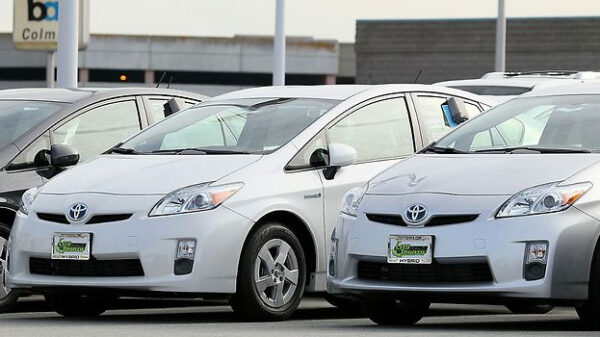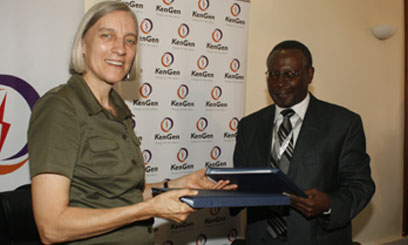NAIROBI, Kenya, Aug 4 – Nairobi residents will from next week experience a significant improvement in their power voltage once the installation of a 30 Megawatts (MW) gas turbine at the Embakasi Power Plant is completed.
The unit is one of the two gas turbines that were relocated from Kipevu Station, in Mombasa to Nairobi’s Embakasi area and which upon commissioning are expected to stabilise the voltage system by about 60MW.
“We are set to start running these turbines and expect that from August 10, gas turbine number 2(which is the first unit) will start running and then around August 30, turbine number one will also be running,” KenGen’s Operations Director Engineer Richard Nderitu explained.
The commissioning of the two turbines is expected to greatly reduce or entirely eliminate the current load shedding program that is mainly affecting industrial zones.
With a stable voltage, it will also be easier to evacuate power from Mombasa where the capacity is said to be high, to the rest of the country.
“There is too much power in Mombasa and the transmission capacity is less because we have only one line going to Kiambere and another that comes from Mombasa to Nairobi,” the manager went on.
The decision to move the turbines was mooted in May 2010 but there were logistic challenges that delayed the relocation.
For instance, the bridges between the two cities could not take the heavy weight of the turbo generators and this forced the generating firm to build their own diversions and carry out improvements of the bridges to facilitate the movement.
Despite these constraints however, the exercise saved the company and the country in general billions of shillings that could have been spent to procure new machines.
It cost an estimated Sh369.1 million ($4million) to move the turbines; purchase the various parts such as gear box, clutch systems and cables needed to install them.
However, had the company opted to buy new units, it would have been forced to part with nearly Sh55.3 billion ($600 million) to procure, ship them in and install them.
Compared to the units at Kipevu, the turbines run on kerosene and will be on a ‘compensator’ mode which means that they will be used to ensure constant voltage and not necessarily to generate energy.
Speaking during a tour of the project’s site, KenGen Managing Director Eddy Njoroge was quick to assure that these procurement costs would not be passed on to the consumers.
However, consumers will have to contend with higher electricity bills as long as the country continues to rely on thermal generation.
“A lot of Kenyans say they would rather have expensive power than none at all and that is what we really must accept that it might be expensive in the short term but in the long run, we will have reliable power supply,” Mr Njoroge said during the tour which was also attended by the Parliamentary Energy Committee.
Currently, hydro-generated power constitutes 42 percent of the total electricity capacity while geothermal accounts for 10 percent.
The remainder is thermal generated hence the reason for the soaring bills.
The current electricity demand is 1,191 MW, with the peak load projected to grow to about 2,500MW by 2015 and 15,000 MW by 2030.
The government has in the last few years being proactive in funding clean energy projects that will in the long term provide relief to consumers and enable the country attain its development goals.
The projects are expected to come on stream in the next few years and the objective is to gradually increase the installed capacity to 19,200 MW by 2030.



































